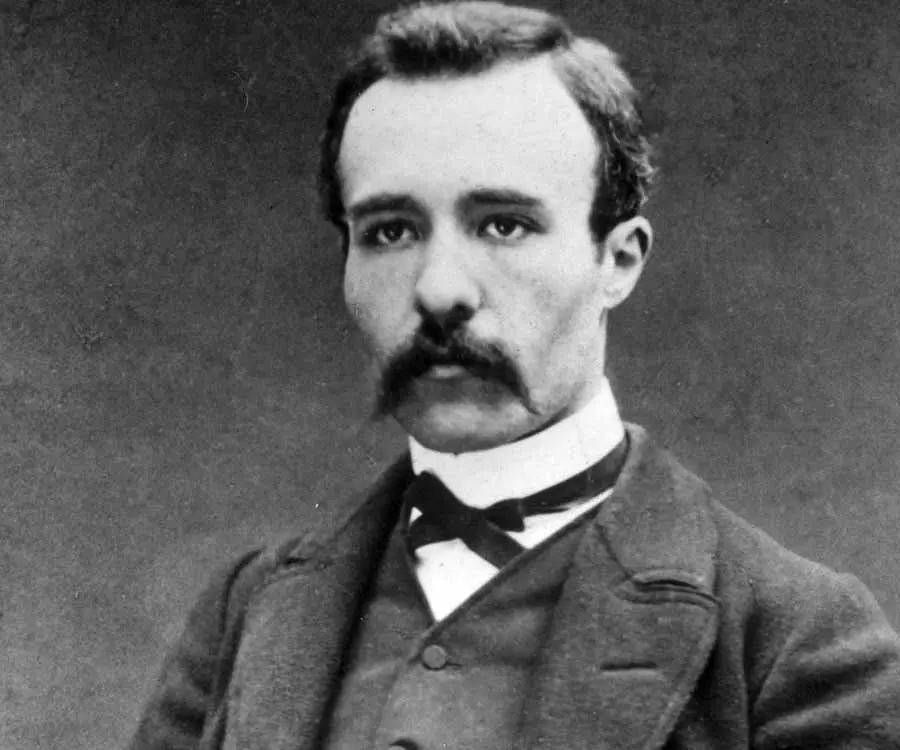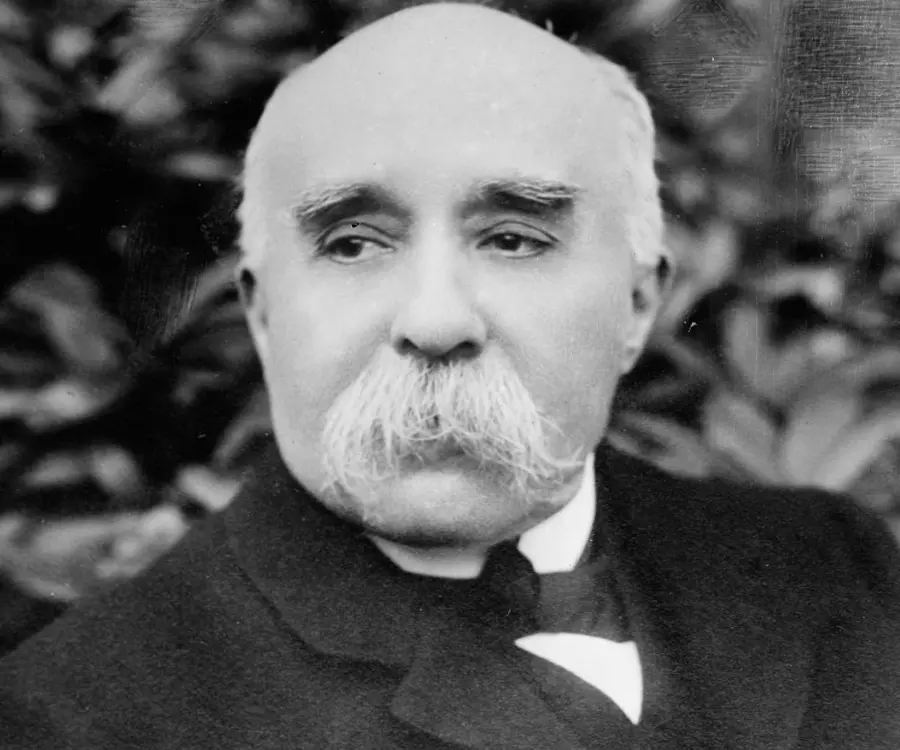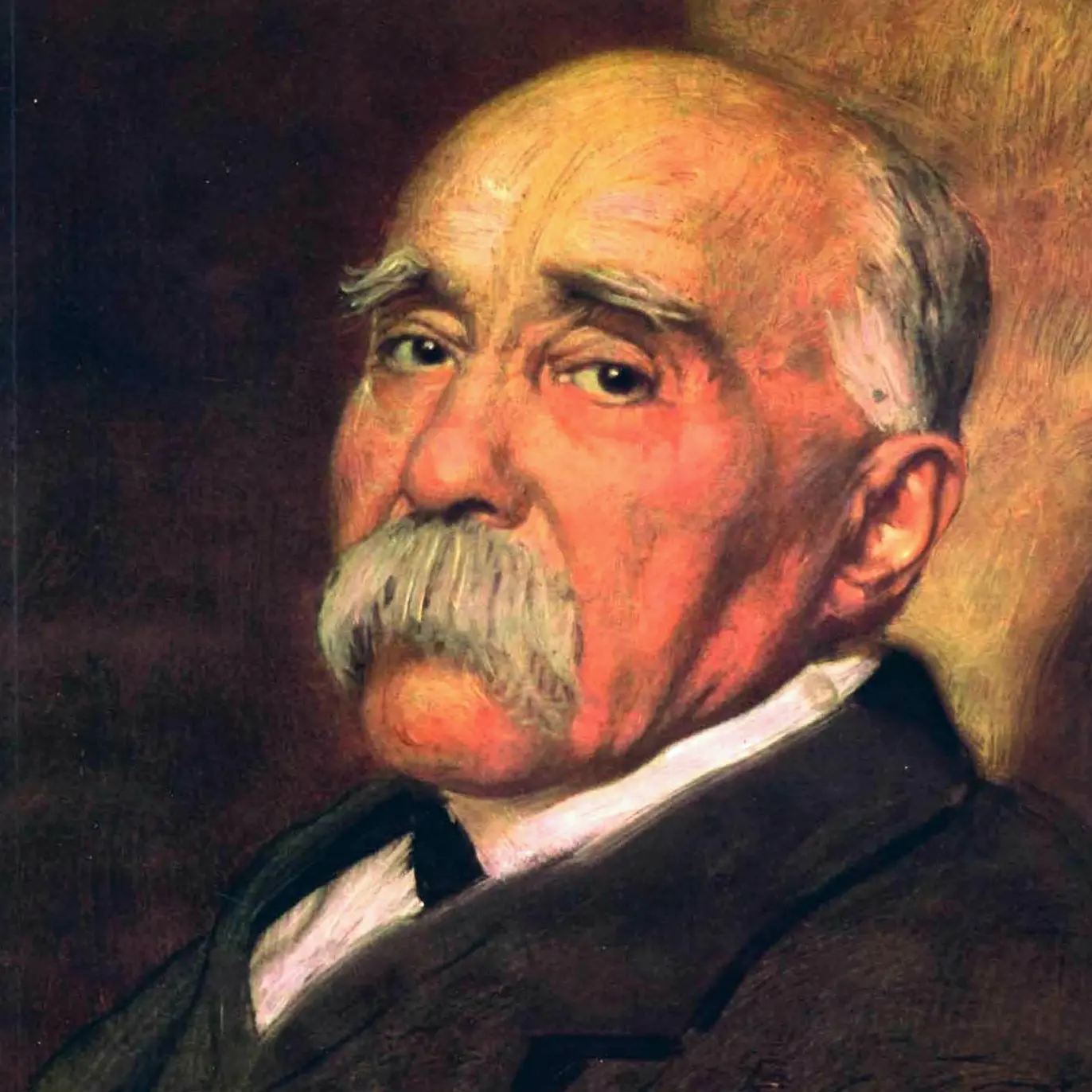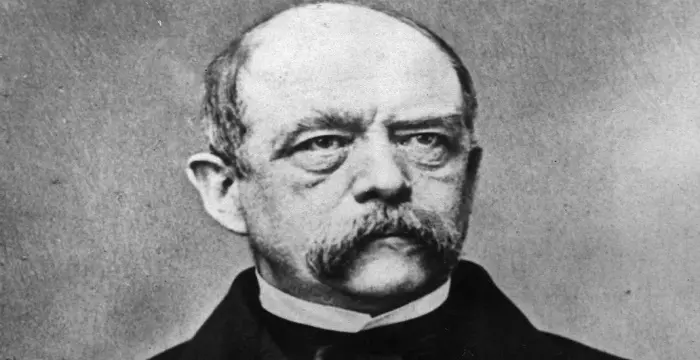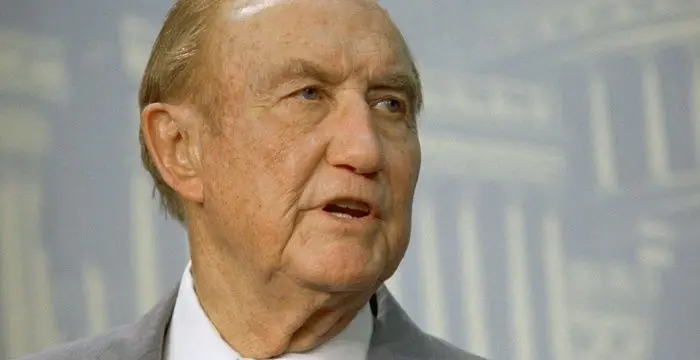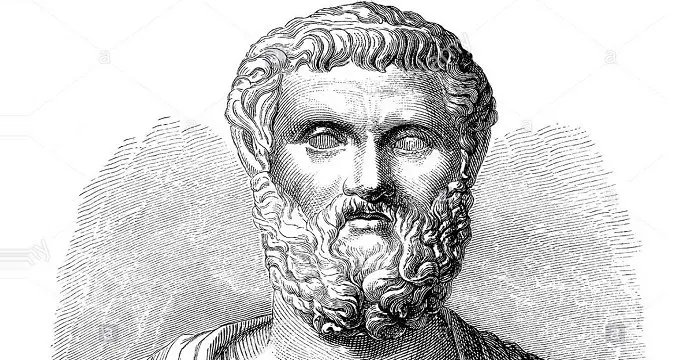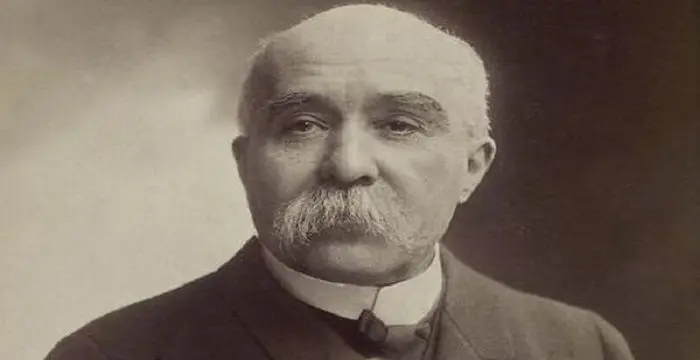
Georges Clémenceau - Former French Prime Minister, Family and Childhood
Georges Clémenceau's Personal Details
Georges Benjamin Clemenceau was a French statesman and Prime Minister of France from 1906 to 1909, and again from 1917 to 1920
| Information | Detail |
|---|---|
| Birthday | September 28, 1841 |
| Died on | November 24, 1929 |
| Nationality | French |
| Famous | Leaders, Political Leaders, Prime Ministers, Former French Prime Minister |
| Spouses | Mary Plummer |
| Known as | Georges Benjamin Clemenceau, Father Victory, The Tiger |
| Birth Place | Mouilleron-en-Pareds, Vendee |
| Religion | Atheism |
| Gender | Male |
| Father | Benjamin Clemenceau |
| Mother | Sophie Eucharie Gautreau |
| Sun Sign | Libra |
| Born in | Mouilleron-en-Pareds, Vendee |
| Famous as | Former French Prime Minister |
| Died at Age | 88 |
Georges Clémenceau's photo
Who is Georges Clémenceau?
Georges Benjamin Clemenceau popularly known as the “Tiger” and “Father Victory” was a French statesman and Prime Minister of France from 1906 to 1909, and again from 1917 to 1920. His admiration for Republicanism, much alike his father, led him into politics and journalism. His contribution in the political journalism through newspapers, weekly reviews such as Le Matin, La Justice and Le Bloc served as strong weapons of Parisian Radicalism. Starting on in 1870 as the Mayor of the 18th arrondissement of Paris, he went on to become president of the Council of Paris and was later elected to the Chamber of Deputies too. Be it as the leader of the Radical party or as the Prime Minister of France, his contribution in the French political arena is well acknowledged. Serving as the French premier for two terms, he helped France in easily sailing through the tough times during the World War I. His idea of human perfection was only through scientific understanding backed up by morality. As the senior French representative at the Paris Peace Conference, he played a major role in drafting the Treaty of Versailles wherein he took a tough stand and succeeded in winning huge reparations from Germany. Although successful to some extent, Clemenceau was not fully satisfied with the results of the Treaty of Versailles on the grounds of leniency towards Germany. His defeat in the elections of 1920s led to his retirement from politics at the age of 79, after which he resumed his writing love to leave behind his memoirs in the form of Grandeur and Misery of Victory.
// Famous Prime Ministers
Edi Rama
Edi Rama is the current Prime Minister of Albania. Check out this biography to know about his childhood, life, achievements, works & timeline.
Leo Varadkar
Cam Leo Varadkar is the current Taoiseach—the Prime Minister—of the Republic of Ireland. Check out this biography to know about his childhood, family life, achievements and other facts about his life.
Otto von Bismarck
Otto von Bismarck served as the Chancellor of Germany and the Prime Minister of Prussia. He unified the German states into a powerful German empire. This biography profiles his childhood, political career, life, achievements and timeline.
Childhood & Early Life
Clemenceau was born on 28, 1841, at Mouilleron-en-Pareds in Vendee, Western France to Sophie Eucharie Gautreau and Benjamin Clemenceau.
His father Benjamin, a non practicing physician, was a political activist. Popular as a devotee of the 1789 Revolution, he was responsible for shaping his son’s inclination towards Revolution and Catholic detest.
In 1858, post his education in the Nantes Lycee, he got his French baccalaureate of letters.
In November 1861, he was taken to Paris by his father to study medicine where he came in contact with the youth who were leading the republican opposition through an association called Agis Comme Tu Penses (Act as You Think).
Clemenceau initiated a journal entitled Le Travail (“Work”) in December 1861. It covered his further course of action in the political sphere but it was seized by the police.
On 23 February, 1862 he was imprisoned for an advertisement he made to celebrate the 14th anniversary of the Revolution of 1848.
Post his release after 73 days he came up with a newspaper, Le Matin (“Morning”) which also faced seizure.
He finished his medical education in 1865 and shifted to United States for four years. During this time, the Civil War was at its peak.
Although he set up his medical office in New York, he spent majority time on literary work against the rule of Napolean III and worked as a political journalist for a Parisian newspaper.
Witnessing the freedom of speech and expression, he was deeply influenced by the American Democracy and developed respect for the politicians promoting the same.
When his father denied him financial support, he started working as a French teacher and riding instructor in a girls’ school in Stamford, Connecticut.
Career
He returned to Paris in 1870 after the French defeat at the Battle of Sedan during the Franco-Prussian War and the fall of the Second French Empire. After his return, he became the mayor of Montmartre and was elected to the National Assembly for the 18th arrondissement.
His efforts to settle a compromise between the radical leaders, the commune and the French Government after the power seizure by the Paris Commune in March 1871 could not be successful.
He had to forego the Mayor post due to pressure from the Commune as being non authoritative on legal grounds.
He tried his luck with the Paris Commune Council but remained unsuccessful. It was only after the fall of the Commune in 1871 that he secured a position in the Paris Municipal council on 23 July 1871 in the Clignan court quarter. He remained in service till 1876 as the secretary, vice-president and finally a President.
He held membership of the chamber of deputies as a Radical Republican from 1876 .The following decade saw Clemenceau’s major focus on journalism.
He published his newspaper, La Justice in 1880 which was considered as the main weapon of the Paris Radicalism.
In spite of becoming unpopular on grounds of being a political critic, he continued to be in the forefront when it came to French Radicalism.
Well-known for his disparaging criticism, he won the tag of the “Tiger” for having disrupting cabinets such as the Ferry Cabinet in 1881 on Tunisian issue, Freycinet Cabinet for interfering in Egypt and the Ferry Cabinet of 1855 in the Indo-Chinese upheaval.
His detest for the Russian alliance was so evident that he lost on contesting again for the Chamber of Deputies in 1893 on grounds of being accused of involvement in Panama Canal scandal and unreasonably blamed for being in British pay.
His career was further disturbed by his participation in the Dreyfus case which opposed the anti-Semitic and nationalist campaigns. Nonetheless his publications did not stop and reached a total of 665 for Dreyfus defend.
After the withdrawal of his newspaper La Justice, je initiated a weekly, Le Bloc in 1900 which continued for two years till 15 March, 1902.
He was elected as the Senator for the Var, district of Draguignan on 6th April 1902. In 1906, he became the minister of the interior and following which became the premier. He made all efforts to foster congenial relations with Britain sort the Moroccan crisis.
After the end of his government in 1909, Clemenceau concentrated his efforts mainly on military preparations in the face of war.
He is credited for the Journal du Var which was first published in 1910. Foreign policies, defaming the Socialist anti- militarism were major issues emphasized in this publication.
In 1913, post becoming the member for the senate commissions for foreign affairs and for the army, Clemenceau came up with a newspaper L'Homme Libre (The Free Man). It emphasized mainly on weaponry and German threat.
L'Homme Libre although faced criticism from the Government leading to suppression in 1914, it was re –published as L'Homme Enchainé (The Enchained Man) which later talked majorly about promoting French triumph and bringing to light all in competencies in the war front.
He became the premier again in November 1917 through the appointment of President Raymond Poincare and remained in power till 1920.
This time he took the responsibility of ministry of war. He concentrated his actions majorly at restoring the French morale in the country and propagated his policy as "Je fais la guerre" (I wage war).
His efforts to form a consolidated military command under Ferdinand Foch and his importance in remaining in war till November 1918 were evident and commendable.
During the Paris Peace Conference, he was a senior French representative. Clemenceau’s main emphasis was on German disarmament and humiliation as well as the return of the territories of Alsace-Lorraine (lost in the Franco-Prussian War) to France.
He had differences with the U.S. President Woodrow Wilson mainly due to the latter’s too idealistic approaches which resulted in Clemenceau’s discontentment with the Treaty.
Faced with charges of being too lenient when it came to the German treatment at the Treaty of Versailles, Clemenceau lost the presidential elections of January 1920 at the age of 79.
Personal Life & Legacy
Clemenceau was a very old friend and confidant of the impressionist painter Claude Monet. He played a major role in getting his donation to the French state of Les Nymphéas(Water Lilies) paintings, now displayed in Paris' Musée de l'Orangerie.
Deeply influenced by Auguste Comte, J. S. Mill, and Charles Darwin ideology, liberation and usual rights were of prime importance to Clemenceau.
It was during his in teaching career in Stamford, he got married on 23 June 1869 to Mary Eliza Plummer, one of his pupils at school.
He had three children with Mary Plummer, two daughters and a son but their marriage ended with a divorce after 7 years.
Clemenceau wrote his autobiography ‘In the Evening of my Thought’ (1929) after his retirement from politics
During his last few years he divided his time between Paris and the Vendée and spent majority time in writing as evident in a two-volume philosophical testament, Au soir de la pensée (In the Evening of My Thought) he managed to complete in 1927.
He passed away on 24 November 1929 in Paris.
Grandeurs etmisères d'une victoire (Grandeur and Misery of Victory), which is the memoir of the war and Paris Peace settlement, was published post his death in 1930.
James Douglas, Jr named Clemenceau, Arizona, USA in the honor of Georges s Clemenceau in 1917
Mount Clemenceau (3,658m) in the Canadian Rockies and the French aircraft carrier Clemenceau was named after Clemenceau.
Champs-Élysées – Clemenceau, a station on lines 1 and 13 of the Paris Métro in the 8th arrondissement have been named after him.
A street in Beirut is named after Georges Clemenceau as Rue Clemenceau.
Clemenceau Avenue, a street in Singapore, has been named in the honor of Georges Clemenceau.
// Famous Leaders
Edi Rama
Edi Rama is the current Prime Minister of Albania. Check out this biography to know about his childhood, life, achievements, works & timeline.
Tecumseh
Tecumseh was a Native American leader of the Shawnee clan. This biography profiles his childhood, life and timeline.
Khalifa bin Zayed Al Nahyan
Sheikh Khalifa bin Zayed Al Nahyan is the current President of the United Arab Emirates (UAE). Check out this biography to know about his birthday, childhood, family life, achievements and fun facts about him.
Georges Clémenceau biography timelines
- // 1789His father Benjamin, a non practicing physician, was a political activist. Popular as a devotee of the 1789 Revolution, he was responsible for shaping his son’s inclination towards Revolution and Catholic detest.
- // 1841Clemenceau was born on 28, 1841, at Mouilleron-en-Pareds in Vendee, Western France to Sophie Eucharie Gautreau and Benjamin Clemenceau.
- // 23rd Feb 1848 To 23rd Feb 1862On 23 February, 1862 he was imprisoned for an advertisement he made to celebrate the 14th anniversary of the Revolution of 1848.
- // 1855 To 1881Well-known for his disparaging criticism, he won the tag of the “Tiger” for having disrupting cabinets such as the Ferry Cabinet in 1881 on Tunisian issue, Freycinet Cabinet for interfering in Egypt and the Ferry Cabinet of 1855 in the Indo-Chinese upheaval.
- // 1858In 1858, post his education in the Nantes Lycee, he got his French baccalaureate of letters.
- // Nov 1861In November 1861, he was taken to Paris by his father to study medicine where he came in contact with the youth who were leading the republican opposition through an association called Agis Comme Tu Penses (Act as You Think).
- // Dec 1861Clemenceau initiated a journal entitled Le Travail (“Work”) in December 1861. It covered his further course of action in the political sphere but it was seized by the police.
- // 1865He finished his medical education in 1865 and shifted to United States for four years. During this time, the Civil War was at its peak.
- // 23rd Jun 1869It was during his in teaching career in Stamford, he got married on 23 June 1869 to Mary Eliza Plummer, one of his pupils at school.
- // 1870He returned to Paris in 1870 after the French defeat at the Battle of Sedan during the Franco-Prussian War and the fall of the Second French Empire. After his return, he became the mayor of Montmartre and was elected to the National Assembly for the 18th arrondissement.
- // Mar 1871His efforts to settle a compromise between the radical leaders, the commune and the French Government after the power seizure by the Paris Commune in March 1871 could not be successful.
- // 1876He held membership of the chamber of deputies as a Radical Republican from 1876 .The following decade saw Clemenceau’s major focus on journalism.
- // 1880He published his newspaper, La Justice in 1880 which was considered as the main weapon of the Paris Radicalism.
- // 1893His detest for the Russian alliance was so evident that he lost on contesting again for the Chamber of Deputies in 1893 on grounds of being accused of involvement in Panama Canal scandal and unreasonably blamed for being in British pay.
- // 1900 To 15th Mar 1902After the withdrawal of his newspaper La Justice, je initiated a weekly, Le Bloc in 1900 which continued for two years till 15 March, 1902.
- // 6th Apr 1902 To 1906He was elected as the Senator for the Var, district of Draguignan on 6th April 1902. In 1906, he became the minister of the interior and following which became the premier. He made all efforts to foster congenial relations with Britain sort the Moroccan crisis.
- // 1909After the end of his government in 1909, Clemenceau concentrated his efforts mainly on military preparations in the face of war.
- // 1910He is credited for the Journal du Var which was first published in 1910. Foreign policies, defaming the Socialist anti- militarism were major issues emphasized in this publication.
- // 1913In 1913, post becoming the member for the senate commissions for foreign affairs and for the army, Clemenceau came up with a newspaper L'Homme Libre (The Free Man). It emphasized mainly on weaponry and German threat.
- // 1914L'Homme Libre although faced criticism from the Government leading to suppression in 1914, it was re –published as L'Homme Enchainé (The Enchained Man) which later talked majorly about promoting French triumph and bringing to light all in competencies in the war front.
- // 1917James Douglas, Jr named Clemenceau, Arizona, USA in the honor of Georges s Clemenceau in 1917
- // Nov 1917 To 1920He became the premier again in November 1917 through the appointment of President Raymond Poincare and remained in power till 1920.
- // Nov 1918His efforts to form a consolidated military command under Ferdinand Foch and his importance in remaining in war till November 1918 were evident and commendable.
- // Jan 1920Faced with charges of being too lenient when it came to the German treatment at the Treaty of Versailles, Clemenceau lost the presidential elections of January 1920 at the age of 79.
- // 1927During his last few years he divided his time between Paris and the Vendée and spent majority time in writing as evident in a two-volume philosophical testament, Au soir de la pensée (In the Evening of My Thought) he managed to complete in 1927.
- // 1929Clemenceau wrote his autobiography ‘In the Evening of my Thought’ (1929) after his retirement from politics
- // 24th Nov 1929He passed away on 24 November 1929 in Paris.
- // 1930Grandeurs etmisères d'une victoire (Grandeur and Misery of Victory), which is the memoir of the war and Paris Peace settlement, was published post his death in 1930.
// Famous Political Leaders
Edi Rama
Edi Rama is the current Prime Minister of Albania. Check out this biography to know about his childhood, life, achievements, works & timeline.
Khalifa bin Zayed Al Nahyan
Sheikh Khalifa bin Zayed Al Nahyan is the current President of the United Arab Emirates (UAE). Check out this biography to know about his birthday, childhood, family life, achievements and fun facts about him.
Leo Varadkar
Cam Leo Varadkar is the current Taoiseach—the Prime Minister—of the Republic of Ireland. Check out this biography to know about his childhood, family life, achievements and other facts about his life.
Strom Thurmond
Strom Thurmond was an American politician, who represented the state of South Carolina in the United States senate for 48 years.
Solon
Solon was an Athenian lawmaker, poet and politician. He is considered as one of the ‘Seven Wise Men’ in Greek culture. This biography provides detailed information about his childhood, life, career, works, achievements and timeline.
Mohammed bin Salman
Mohammed bin Salman is the Crown Prince of Saudi Arabia and the heir apparent to the throne. Check out this biography to know about his childhood, family life, achievements and other facts about him.
Georges Clémenceau's FAQ
What is Georges Clémenceau birthday?
Georges Clémenceau was born at 1841-09-28
When was Georges Clémenceau died?
Georges Clémenceau was died at 1929-11-24
Where was Georges Clémenceau died?
Georges Clémenceau was died in 16th arrondissement, Paris
Which age was Georges Clémenceau died?
Georges Clémenceau was died at age 88
Where is Georges Clémenceau's birth place?
Georges Clémenceau was born in Mouilleron-en-Pareds, Vendee
What is Georges Clémenceau nationalities?
Georges Clémenceau's nationalities is French
Who is Georges Clémenceau spouses?
Georges Clémenceau's spouses is Mary Plummer
What is Georges Clémenceau's religion?
Georges Clémenceau's religion is Atheism
Who is Georges Clémenceau's father?
Georges Clémenceau's father is Benjamin Clemenceau
Who is Georges Clémenceau's mother?
Georges Clémenceau's mother is Sophie Eucharie Gautreau
What is Georges Clémenceau's sun sign?
Georges Clémenceau is Libra
How famous is Georges Clémenceau?
Georges Clémenceau is famouse as Former French Prime Minister
